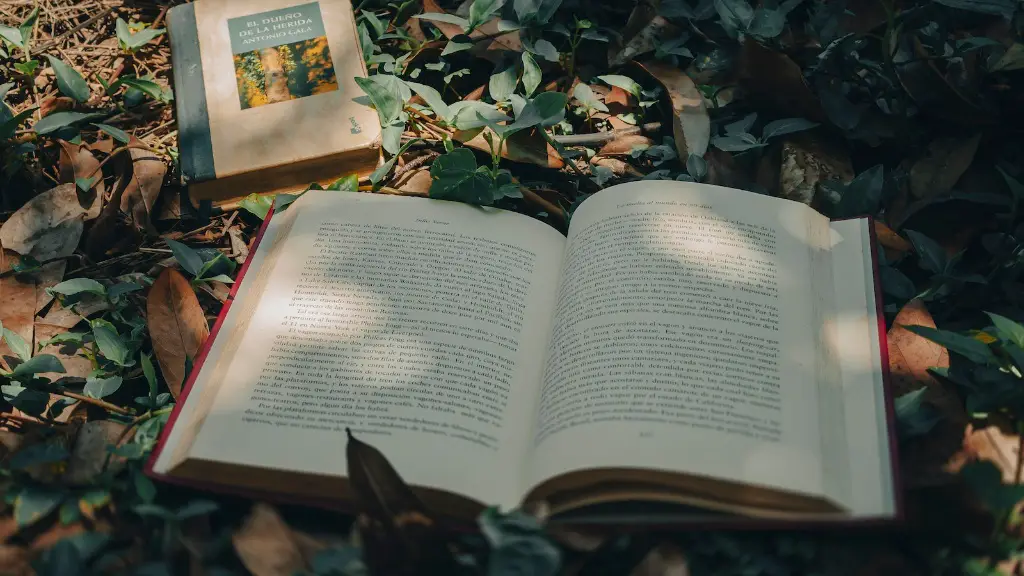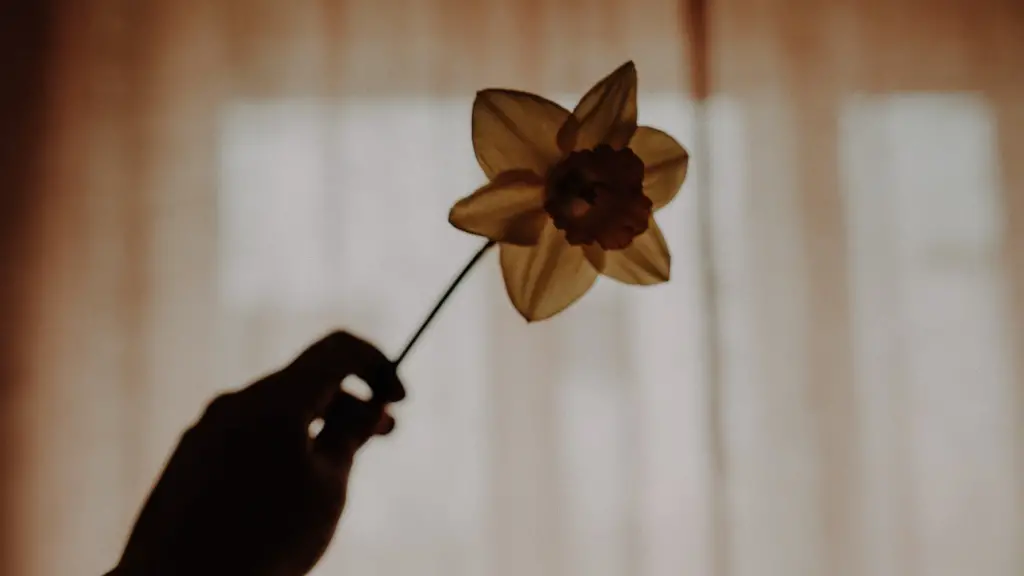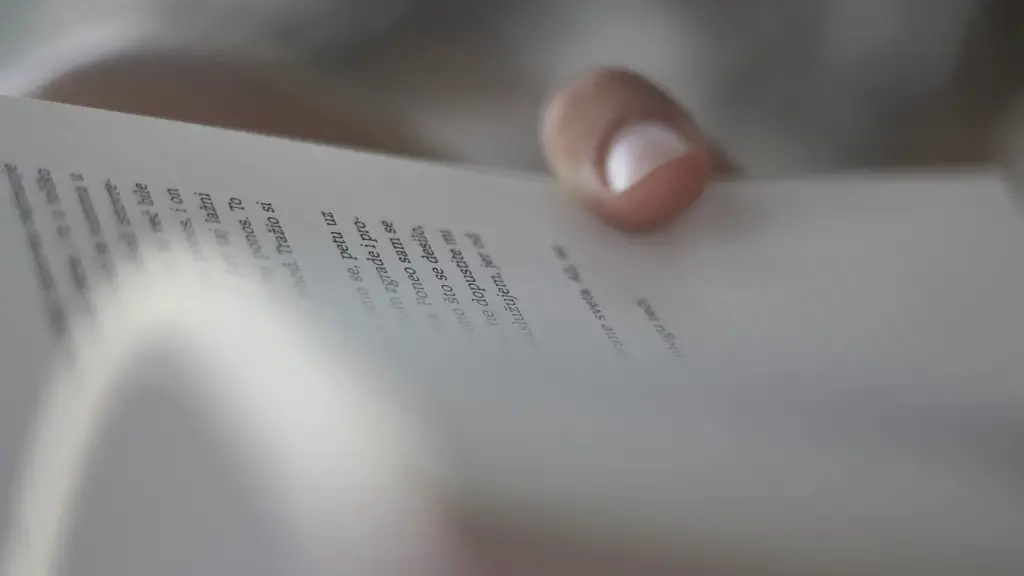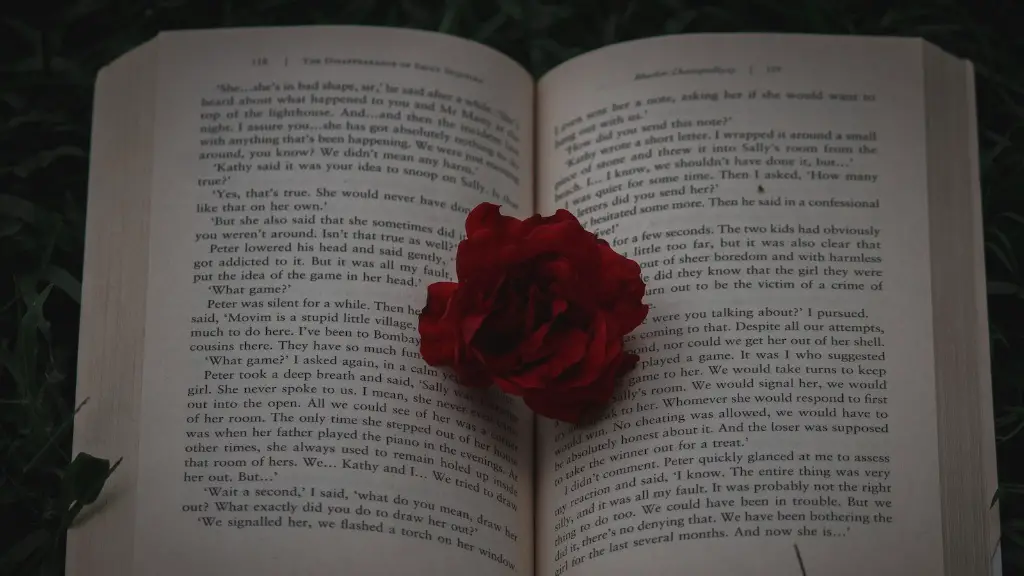Allusion is a figure of speech where a writer or speaker references a well-known event, person, place, or thing to get a reaction from the audience or reader. Allusions can range from classical history to current popular culture. It is a way of adding complexity, subtlety, and depth to a text. By making allusions, a writer or speaker creates a bridge of familiarity that allows him or her to communicate more effectively with the readers. Allusions can be used to explain something delicately, add color to a text, or create a mood to the readers.
In poetry, allusion is an important device that helps the poet convey their ideas and feelings to the readers. Poets often make allusions when writing about difficult topics. Allusion can be used as a rhetorical tool to create a deeper understanding for readers and to evoke feelings of nostalgia, beauty, or even horror. It allows poets to bring to life characters and stories from history or mythology and to bring them into the present moment. For example, Tennyson refers to “Ulysses” and Browning to “Oedipus” in their respective poems. This use of allusion creates a shifting of perspectives where the reader can relate the allusions in the poem to their own life.
Some allusions in poetry may be subtle or even unnoticed, but they all serve a purpose. Allusions add a level of sophistication and refinement to a writer’s work, while drawing on literary or popular culture. This gives readers and audience members a point of reference to better understand the poem and relate to the poet’s words. Making an allusion can immediately create a certain atmosphere in a poem, one that can be understood by anyone, regardless of where they are from.
An allusion can often go beyond the words on the page and convey the feelings, beliefs, and values of the poet without directly saying it. Allusions can help the reader to create mental images or strongly tie two themes together. Allusions work to create a visual connection between the poet and the reader, which is why allusive language is often used in art forms like film and music.
An allusion, however, can only be truly effective if the reader or listener understands what the poet is referencing. Therefore, the poet must be careful to choose references that will be relatable to the audience. Allusions must also be mindful not to come across as too obscure, as this can obscure the message of the poem.
Etymology of Allusions
The word “allusion” comes from the Latin verb “alludere”, which means to “play” or “joke”. Allusions are references to a known story, character, or event that has been told before, such as the story of Snow White and the Seven Dwarves or the classic tale of Adam and Eve. An allusion can be used to show a hidden meaning or to get the reader thinking about things on a deeper level.
By making an allusion to something already known, the poet is able to connect with their audience in an intimate way. They can imply a lot by very few words; they can make the reader think, smile, and feel nostalgia or relatability. Allusions add flavor to a work and even allow the reader to make new associations and interpretations when used effectively.
Effects of Allusions in Poetry
Allusions can often add a certain level of mystique and beauty to a piece of poetry. For example, when a poet references a classic tale such as Romeo and Juliet, it can evoke feelings of sadness and tragedy for the readers. Allusions can also add complexity to a poem by suggesting the presence of deeper meanings. For example, a poem could be about a young couple but actually use Romeo and Juliet as an allusion to suggest that the couple will suffer a tragic outcome in their relationship.
In addition, allusions can be used as literary devices to connect two separate pieces. For instance, in a poem about loss, a writer may allude to a classic tragedy such as Hamlet to show that the loss is larger than just one person’s story. Allusions can also hint at a moral, prompting the reader to apply the lesson of the allusion to their own life. Allusions are a powerful tool for poets to express themselves and to speak to the reader.
Varieties of Allusion in Poetry
Allusions come in a variety of forms, such as classical allusions, religious allusions, and even pop culture allusions. Classical allusions are references to Greek and Roman mythology and history. For example, when Dante references “Aeneas” in The Divine Comedy, he is making a classical allusion. Religious allusions are references to biblical stories, such as “Jonah” or “Adam and Eve.” These types of allusions appeal to the religious traditions of a particular audience.
Pop culture allusions are references to popular movies, songs, books, or other forms of entertainment. A popular example is when Bob Dylan references the Beatles in his song “The Times They Are A-Changin.” Pop culture allusions can refer to anything that is currently popular in society and are used to hint at a deeper message or to evoke certain emotions.
No matter what type of allusion is being used, it is an important device for poets to use in their work to create an emotional experience for readers. Allusions allow writers to draw on a richness of language, reference points, and symbolism that would otherwise be lost. Allusions allow poets to draw on the history and culture of their audience and to evoke deep, meaningful connections with them.
Analysis of Allusions in Poetry
Analyzing allusions in poetry is an important way to gain a better understanding of the poem. Allusions in a poem can be analysed to determine how they relate to the poem’s themes or messages, as well as how they are used to create an atmosphere or evoke a feeling. It is also important to consider the context in which the allusion is used, as this will help in understanding the poet’s purpose for using an allusion. Are they using it to reference a specific culture or religion? Are they using it to hint at a certain message? Are they using it to create a certain atmosphere? Answering these questions can help one to discover the true meaning of the poem.
Furthermore, it is important to consider the allusion’s relationship with the other elements of the poem. For example, if an allusion is used in the middle of a poem, does it connect the existing lines together in any way? Does it add to the overall meaning of the poem or does it distract from it? Does it add to the complexity, or does it make the poem too complicated? All of these questions should be considered when analysing any allusion in a poem.
Conclusion of Allusions in Poetry
In conclusion, allusions are a powerful tool for poets to communicate with their readers or listeners. Allusions, if used effectively, can create an atmosphere, evoke an emotion, and provide a reference point for the readers. They can add complexity and subtlety to a poem, as well as hint at deeper meanings and morals. Allusions can also bring stories and characters from history and mythology into the present for readers to relate to and enjoy. When analysing allusions, it is important to consider the context, the relationship with other elements, and the overall message.



